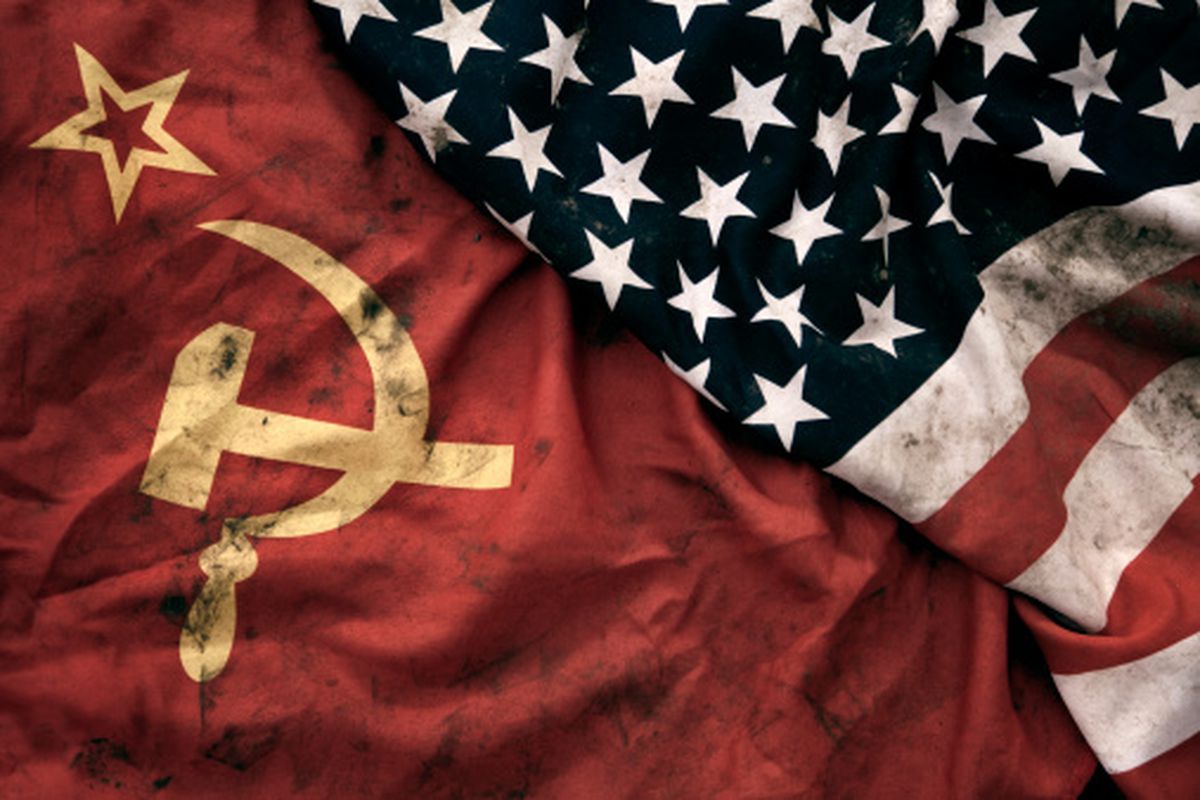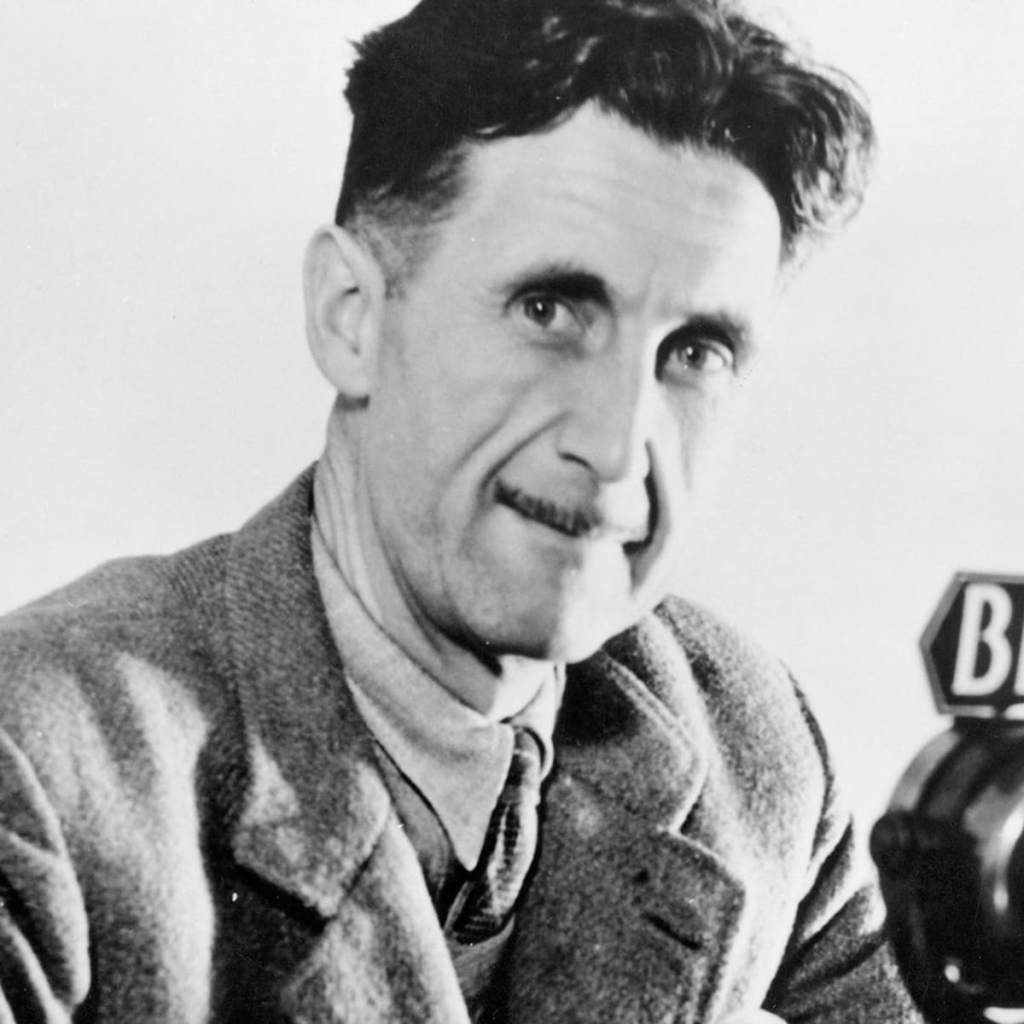Cold War Retrospective.
Let us not be deceived—we are today in the midst of a cold war. Our enemies are to be found abroad and at home. Our unrest is the heart of their success.

“Once you hear the details of victory, it is hard to distinguish it from a defeat.”
– Jean-Paul Sartre
“Let us not be deceived—we are today in the midst of a cold war. Our enemies are to be found abroad and at home. Let us never forget this: Our unrest is the heart of their success. The peace of the world is the hope and the goal of our political system; it is the despair and defeat of those who stand against us. We can depend only on ourselves.”
Those words above were uttered by multimillionaire businessman and financier Bernard Baruch, in a speech he gave at the unveiling of his portrait in the South Caroline House of Representatives in April 1947. The term “Cold War” describing relations between the United States and the Soviet Union had entered the lexicon of American diplomacy.
“We may be heading not for general breakdown but for an epoch as horribly stable as the slave empires of antiquity. James Burnham’s theory has been much discussed, but few people have yet considered its ideological implications – that is, the kind of world-view, the kind of beliefs, and the social structure that would probably prevail in a state which was at once unconquerable and in a permanent state of “cold war” with its neighbours.”
George Orwell (the author of the classic dystopian novel “1984”) used the term cold war in his essay above entitled “You and the Atom Bomb” in October 1945.

According to Katherine Connor Martin the Head of US Dictionaries at Oxford University Press, “This wasn’t the first time the phrase cold war was used in English (it had been used to describe certain policies of Hitler in 1938), but it seems to have been the first time it was applied to the conditions that arose in the aftermath of World War II.”
Oxford’s Martin goes further naming the propagator of the “Cold War” as a notion. “The term was popularized by the American journalist Walter Lippman, who made it the title of a series of essays he published in 1947 in response to U.S. diplomat George Kennan’s ‘Mr. X’ article, which had advocated the policy of “containment.”
The US Cold War policy of “containment” allows me to segway into the main reason for my “Cold War” retrospective. Professor Hal Brands recently penned a book entitled “The Twilight Struggle: What the Cold War Teaches Us about Great-Power Rivalry Today". I found his work worthy of a long-winded review due to the book’s keen intellectual grasp of strategy and policy illustrated by the “Cold War”.
What in God’s name gives me the audacity to comment on the 10th book of the Henry A. Kissinger Distinguished Professor of Global Affairs at the Johns Hopkins School of Advanced International Studies and a Scholar at the American Enterprise Institute? Also, Brands’ CV includes previously serving as Special Assistant to the Secretary of Defense for Strategic Planning and lead writer for the Commission on the National Defense Strategy for the United States.
Professor Brand has 9,094 Twitter followers. I have 58 followers, though I only started in November 2021. Since my service to my country is pre-digital, I could easily remain tucked away in obscurity.
So why I am commenting on Professor Brand’s work?
Someone needs to call balls and strikes for history's sake. And because I was there. Knee deep in the most dangerous days of the Cold War in West Germany and Italy. Tip of the spear. At the top of the intelligence food chain from 1980 through the late 1980s at the strategic level of affairs. Read my post on “Berlin” last December for a little color to those days.

Along with several other fine men and women, I added value to several “reports” on topical issues of the day like Poland’s Solidarity movement and other pressing flashpoints in our shifting area of operations. As much of my group’s work and mission still remain classified or under a binding NDA, I choose to be rather opaque in my explanations.
Also, given our ongoing confrontation with the current Russian regime, I don’t want to inadvertently lend comfort or aid to our adversary. For the record, President Vladimir Putin’s tenure in Dresden, East Germany, and mine in West Germany & Italy overlapped. His funding of the Red Army Faction (RAF) and other dissidents (terrorist) groups caused me discomfort on a couple of occasions. So, let’s just say I am not a fan of the former KGB officer.
The overarching topic of Brand’s book is what the Cold War can teach us about the Great-Power rivalry today. And “how” the Cold War's containment policy was achieved and actualized with the applications for today’s “competition.” From Brands’ book, “no amount of history can provide precise answers to hard policy problems. History can, however, give us greater intellectual depth ahead of the coming trials. Relearning the history of America’s Cold War can rebuild muscle memory that has atrophied in recent decades.” Well said.
The idea of containment was first clearly articulated by George Kennan in “The Sources of Soviet Conduct” from the Foreign Affairs article he penned as “X” in April 1947. He writes, “In these circumstances, it is clear that the mean element of any United States policy toward the Soviet Union must be that of a long-term, patient but firm and vigilant containment of Russian expansive tendencies.”

The policy idea was articulated further in National Security Council document #68 or NSC-68 commissioned by President Truman and delivered in April 1950. Per NSC 68, the United States should vigorously pursue a policy of “frustrating” Soviet expansion. The report recommended that the United States embark on the rapid military expansion of conventional forces and the nuclear arsenal, including the development of the new hydrogen bomb. In addition, massive increases in military aid to U.S. allies were necessary as well as more effective use of “covert” means to achieve U.S. goals.
Containment was birthed in the cauldron of 1950. The Korean conflict kicked off on 25 June 1950 as North Korea invaded South Korea. The “frustrating” or containment policy articulated in NSC 68 became fully operational on the fly without excessive debate under the gun of the war. The policy's impact is graphed below in the starkest of terms.
My tenure of service is overlaid on the nuclear arms escalation chart provided by the Federation of American Scientists. Neither side intended to compromise on their vision for “global nuclear deterrence” resulting in a manic competition that only one side could afford.

Adding context to astronomically large warhead count, Research in 2018 found that 100 nuclear weapons are LIKELY the “pragmatic limit” for any country to have in its arsenal. Any aggressor nation unleashing more than 100 nuclear weapons could ultimately devastate its own society, scientists warn. However, opinions on the critical threshold for a nuclear winter vary. As the graphic above suggests our competition with the Soviets exceeded any reasonable tipping point. In those days, a nuclear exchange would most certainly result in total annihilation.
With those grim historical remembrances, I started reading Brands’ “The Twilight Struggle”. I made it to chapter 1, page 2 before bursting out laughing. Remember humor is not the intention or strength of the international relations crowd. The humorous passage from “The Twilight Struggle” read as follows:
“Containment was not an immaculate, detailed blueprint set down by George Kennan. It was pieced together, incrementally and often chaotically, and almost immediately took on characteristics that Kennan found appalling. The strategy triggered fierce political fights almost from the outset; it faced withering critiques from left and right, hawks and doves, for decades thereafter. And not surprisingly, because containment had plenty of drawbacks—its plodding pace, its dangers and costs, its moral compromises—and often looked to be failing until it triumphed. The idea that the Cold War was a golden age would have been news to those who experienced it. Containment looks so pristine, so impressive, only in hindsight.”
“The idea that the Cold War was a golden age…” That line was a drop-the-mike moment for me. Hence, my laughter. Don’t get me wrong. I served with and around the smartest, most dedicated, and patriotic individuals our country could assemble, but the process of making the “Cold War” sausage was not pretty. And with 70,000 nuclear warheads to throw at each other, Orwell’s dystopian reality appeared predestined to those of us with front seats to the show.
After hitting the nail on the head with the messy “containment” slash deterrence process, Brands forced me to pay attention. To give his ideas their just due. I am a big fan of another of his lines from the book on applying history to a decision matrix:
“History, in fact, can never fully solve our strategic problems. Events are like snowflakes: no two are exactly alike. Luck, circumstance, and human choice ensure that there are no iron laws of history.”
Dr. Brands, I will quote your line with due attribution in my future writings.
Professor Brands does a fine job as narrator taking the reader through thirty years of the Cold War contest to Ronald Reagan’s presidency and his decision made to abandon the old highly entrenched orthodoxy. The Cold War insanity of doing the same things over and over again expecting a different result needed to stop.
We knew the Soviet’s latest 5-year economic plan was a serious bust. Actually, the Soviets hadn’t gotten anywhere close to achieving real meaningful economic goals in the previous two decades. The heady days of Sputnik were long gone. The vaunted “Soviet economicus” had feebly limped through the last two decades using a cane and wheelchair.
Brands writes, “Reagan had promised to wage a multipronged offensive—in the arms race, the Third World, Eastern Europe, and even by attacking the stability of the Soviet regime. Yet the purpose was not to entrench a perpetual Cold War, much less provoke a hot one. The purpose was to put the Kremlin in such dire straits that it would have to begin reducing tensions on American terms. “We could threaten the Soviets with our ability to outbuild them,” Reagan said in 1981, and then “invite the Soviets to join us in lowering the level of weapons on both sides. A worsening Cold War might bring about a better peace.”
By the early 1980s, the edifice of Soviet power, beyond nuclear arms, was largely make-believe. A paper tiger on the verge of extinction. However, the Soviet Bear’s arsenal of nuclear weapons forced America to devise a strategy to defang the communist state in stages. No one wanted “Crazy Ivan” hitting any buttons in desperation. President Truman’s arms race had paid dividends. The Soviets were stifled and choking on their own inefficient ideology. President Reagan listened to his briefers and issued orders accordingly following President Jimmy Carter’s lead.
As Brands faithfully records, the process of coaxing the Soviets out of their rabbit hole became a tightrope of contradicting forces playing on the Cold War revivals. Prejudices and mistrust reigned in the “trust but verify” disarmament talks. Progress wasn’t overnight, nor was it ever assured. Only in hindsight does the end seem anything close to a “fait accompli”. The recognition of the critical and chronic need for seismic change jarred the Soviet leadership out of its self-induced ideological stupor. The Soviet implosion had already begun.
The dominos fell unevenly and not exactly as scripted. Each pesky domino toppled the next in an ugly irrevocable chain of causality ending the Soviet state. With the fall of the Berlin Wall in 1989, the “Cold War” had effectively reached a crescendo. The world cheered further in 1992 as it entered a brief and very short-lived epoch labeled “The End of History and the Last Man.”
Professor Brands’ offers another valuable takeaway from the falling Cold War dominos worth memorializing. “The military contest thus revealed that dominating a dynamic interaction requires exploiting asymmetric strengths and imposing asymmetric costs. It also revealed, however, that dominating a competition and stabilizing it are not the same thing.”
It is important to note, that history has failed to record the sheer depth and breadth of the methods the US employed to exploit asymmetric strengths and impose asymmetric costs on the Soviets and their satellites states. But since this isn’t the end history, the record could eventually be refreshed.
Switching gears as I get ready to close, Brands also warn, “The Chinese challenge is the graver of the two because Chinese power and potential are so great. Although U.S. officials long hoped that Washington could avoid competing with China, the Communist government has been pursuing its “Chinese Dream” at America’s expense.”
Finally, in my review of “The Twilight Struggle”, I appreciated the Professor’s final takeaway, “the need to see competition as a way of life”. The reality of human history suggests we will never all agree nor get along. Competition is here to stay, as Brands so wisely points out.
Frankly, even if I had no interest in the Cold War, I would buy Professor Brands’ book as a strategy and applied history primer that happens to use the Cold War for illustrative purposes. His macro lens tinted with history’s coloration is worth the price of the book’s acquisition and the time to read it. An “important” book in my eyes, Brands’ “The Twilight Struggle” is going in my library as an heirloom to future generations. I suggest you do the same.
For my readers, I thought it important in light of the recent Russian invasion of Ukraine and the rampant overuse of the “Cold War” analogy to take a couple of minutes to brush up on our history. Additionally, please keep an eye out for the Red Chinese to use our distraction in Ukraine to their benefit.
Let me offer my own takeaway from our Cold War talk, I contend that the twisting of the lessons from America’s “containment” of the communist threat by US policy mavens has resulted in the crisis in Ukraine and the standoff with the Chinese communists. That's my two cents.
Please consider taking the line from Bernard Baruch's speech in 1947 to heart, "Let us not be deceived—we are today in the midst of a cold war. Our enemies are to be found abroad and at home. Our unrest is the heart of their success."
Until next time. Travel safe.

